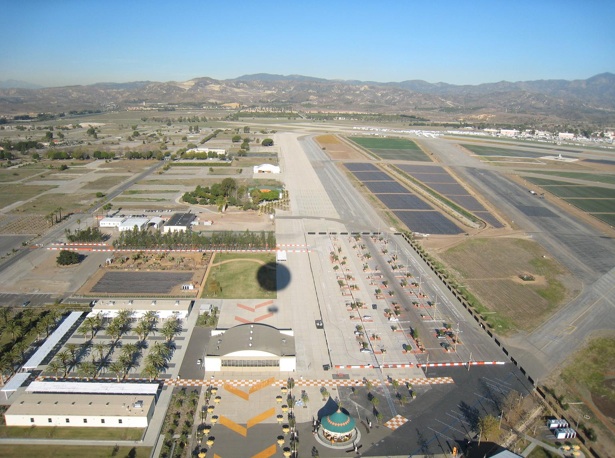
Image Credit: Department of Energy
After almost a decade of playing host to the Solar Decathlon on the National Mall in Washington, D.C., the Department of Energy, as it suggested it would before the 2011 competition, found a new location for the event – way west of D.C.
The DOE has announced that 20 teams have been selected for the 2013 Solar Decathlon and that they will display their homes on a runway of the former Marine Corps Air Station El Toro, which is now known as the Orange County Great Park, in Irvine, California. Setting up on the tarmac is expected to be easier than it was for the teams that showcased their projects on the National Mall, although the National Mall may still be considered by many to be the more prestigious location.
Irvine, in any case, will likely be warmer – and, probably, drier – than Washington when it comes time to stage the 2013 event.
The DOE announced in January 2011 that it had begun looking for an alternate location for the Decathlon because it wanted to support a National Park Service restoration program designed to improve and protect the mall. Protests against the move by many of the student teams, which had tied fund-raising for their projects in part to their eventual display on the mall, by politicians eventually prevailed, although the contest location was shifted to West Potomac Park, a section of the mall south of the main area.
Several newcomers and a few familiar names
All of the teams will offer their best takes on energy efficient envelopes, design, performance control and monitoring systems, building-integrated photovoltaic systems, and heat-recovery systems.
The 2013 lineup includes 16 teams from schools in the U.S., two from universities in Canada, one from Vienna University of Technology, in Austria, and one from Czech Technical University, in Prague, Czechoslovakia.
A number of these schools were represented by teams during the 2011 competition, including Hampton University and Old Dominion University, in Virginia (which produced a project called Unit 6); Middlebury College, in Vermont (Self-Reliance House); Southern California Institute of Architecture and California Institute of Technology, in Los Angeles (the CHIP House); Stevens Institute of Technology, in Hoboken, New Jersey (Empowerhouse); and University of Calgary, in Alberta, Canada (TRTL). Another school returning to the competition, Santa Clara University, in Santa Clara, California, presented a project called Refract House in the 2009 contest.
The other contestants are:
Arizona State University and University of New Mexico, based in Tempe, Arizona, and Albuquerque, New Mexico.
Missouri University of Science and Technology, in Rolla, Missouri.
Norwich University, in Northfield, Vermont.
Queens University, Carleton University, and Algonquin College, in Kingston and Ottawa, Ontario, Canada.
Stanford University, in Palo Alto, California.
The Catholic University of America, George Washington University, and American University, in Washington, D.C.
The University of North Carolina at Charlotte, in Charlotte, North Carolina.
The University of Texas at El Paso and El Paso Community College, in El Paso, Texas.
University of Louisville, Ball State University, and University of Kentucky, in Louisville, Kentucky; Muncie, Indiana; and Lexington, Kentucky, respectively.
University of Nevada, in Las Vegas.
University of Southern California, in Los Angeles.
Vienna University of Technology, in Vienna, Austria.
West Virginia University, in Morgantown, West Virginia.
Weekly Newsletter
Get building science and energy efficiency advice, plus special offers, in your inbox.














0 Comments
Log in or create an account to post a comment.
Sign up Log in